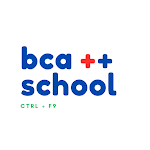Basics of Flow Chart – Symbols, Rules, and Examples
A Flow Chart is a diagrammatic representation of an algorithm or process. It shows the sequence of steps using different symbols and arrows. In this post by BCA School, you’ll learn the basics of flow charts, their importance, standard symbols, and examples for your BCA programming subjects.

🔹 What is a Flow Chart?
A flow chart is a graphical method of representing an algorithm. It uses shapes like rectangles, diamonds, and arrows to show the flow of control. Each shape represents a particular type of operation or decision.
🔹 Purpose of Flow Chart
- To visualize the steps of an algorithm.
- To easily understand program logic before coding.
- To detect logical errors early.
- To communicate system design effectively.
🔹 Advantages of Flow Chart
- Easy to understand and explain logic.
- Helps in debugging and program maintenance.
- Acts as a blueprint for writing programs.
- Useful for documentation and analysis.
🔹 Standard Flow Chart Symbols and Their Meaning
| Symbol | Meaning | Usage |
|---|---|---|
| ⬭ (Oval) | Start / End | Indicates beginning or end of a program |
| ▭ (Rectangle) | Process | Used for calculations or assignments |
| ⧫ (Diamond) | Decision | Used for condition checking (if-else) |
| ⧉ (Parallelogram) | Input / Output | Used to show data input or output |
| → (Arrow) | Flow Line | Shows direction of logic flow |
🔹 Rules for Drawing Flow Charts
- Flow should always go from top to bottom or left to right.
- Use proper symbols for each operation.
- Each flow chart must start with ‘Start’ and end with ‘Stop’.
- Arrows must clearly indicate the flow of control.
- Avoid crossing of lines wherever possible.
🔹 Example: Flow Chart to Find the Largest of Two Numbers
Start ↓ Input A, B ↓ Is A > B ? ↙ ↘ Yes No ↓ ↓ Print A Print B ↓ Stop
🎯 Conclusion
Flow charts help you visualize how a program will work before you start coding. For every algorithm, drawing a flow chart makes the logic clear and helps in better understanding of the programming process. As a BCA student, practice drawing flow charts for all your problem-solving exercises!

